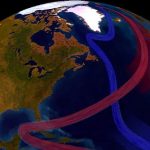Oceans
- December 18, 2020
- Marisa Sloan
Despite the sci-fi name of this rare-earth element, neodymium is actually pretty common. The silvery metal is used in everything from cell phones and wind
- December 26, 2019
- zfishman
The locked office of the late climate scientist Wallace “Wally” Broecker displays a wooden ship’s wheel, mounted on a window-paneled wall behind his former desk.
- December 20, 2019
- ebruess
I ziplined recently with a scientist who told me that her work involved almost 4,000 floating robots and a massive global computer database that could
- December 19, 2019
- asnabes
Calcium carbonate, a primary ingredient in the shells of tiny marine organisms, reduces the acidification of our world’s oceans. The ocean is approximately 30% more
- November 20, 2019
- zfishman
Dozens of scientists convene every year at the Comer Climate Conference to share new research about rising oceans and melting glaciers, both today and in
- October 29, 2019
- zfishman
Richard Alley caught a cold while flying to southwest Wisconsin for the annual Comer Climate Conference land, hosted each fall by the Comer Family Foundation.
- December 20, 2018
- hmagnuson
Tiny bubbles of gas trapped in glacial ice are giving scientists clues about Earth’s sea level 125,000 years ago.
The gas bubbles serve as bite-sized samples
- December 20, 2018
- ksimpson
Scientists are taking a serious look at ocean biological systems that temper carbon dioxide levels in the atmosphere and trap them in the ocean depths,
- December 19, 2018
- adorman
Natural ocean biology can help remove carbon dioxide from the atmosphere by trapping it in surface algae that sinks to the bottom of the sea.
- December 18, 2018
- hmagnuson
Climate scientists veterans Richard Alley, Wally Broecker and George Denton have witnessed immense changes during their decades-spanning careers. They’re buoyed by scientific advances, but also
Categories
Latest Articles
December 30, 2024
December 30, 2024
Contact Information
Abigail Foerstner, Managing Editor and Medill Associate Professor




